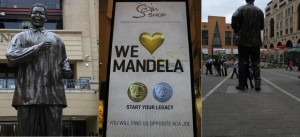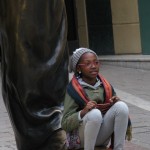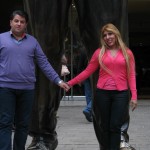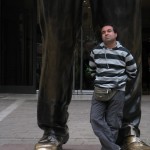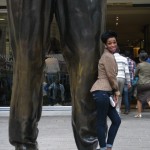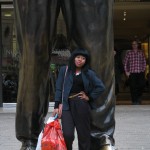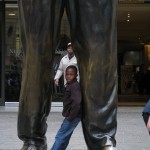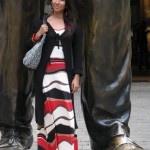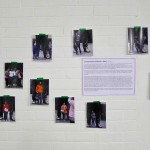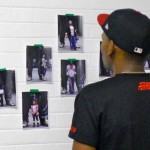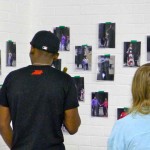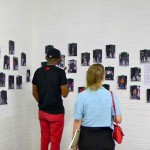Mandela Square
Auteurs / Authors : Cǎlin Dan
Description : analyse et documentation de l’expression de la passion populaire pour Nelson Mandela telle qu’elle s’exprime au pied de sa statue géante à Mandela Square au coeur de Sandton, le quartier d’affaire de Johannesburg
Axes de recherche / Research axes (Play/Urban) : Public space/common space, generate audience, performative and theatricality
>>>>>>>>>>>>>>>>>>>>>>>>>>>
In situ (may include different times > time 1, time 2, time 3, etc..)/ peut inclure différentes étapes > Temps 1, Temps 2,Temps 3, etc..
Medium : Photography
Genre : reportage (images + texte)
Concept : observation
Participants : Cǎlin Dan et touristes
Durée / Duration : une demi journée
Ville / City : Johannesburg / Sandton
Questions :
>>>>>>>>>>>>>>>>>>>>>>>>>>>
Exhibit
Medium : photographies et texte
Genre : installation murale
Concept : rendre compte des pratiques d’adoration de la figure de Mandela
Participants : Cǎlin Dan et public
Durée / Duration : soirée d’exposition final à Parking gallery
Ville / City : Johannesburg
Date : septembre 2012
Questions :
>>>>>>>>>>>>>>>>>>>>>>>>>>>
Analyse critique / Critical analysis :
>>>>>>>>>>>>>>>>>>>>>>>>>>>
Protocoles (collectif) d’action / (collective) Action protocols : observation, photographie, écriture
>>>>>>>>>>>>>>>>>>>>>>>>>>>
texte de Cǎlin Dan
There are several threads followed every time I have the leisure to explore a city: architectural landmarks are the entry point, text layers are following, then come the vernacular interventions, and finally come the people.
People are the difficult share, because of the exploitation aspect, that does not need much explaining here. Therefore, it is a blessing when the narcissistic obsession people have with landmark photography occurs. Since everyone is having a ball of self-representation anyhow, my (photographic) gaze is not so intruding anymore.
Nelson Mandela’s monument in front of the “Michelangelo Towers” mall at Sandton is a gift if one is interested in the symbolic representations of the South African complexity. Without traveling, and with no risk involved, you just take time to look at the defilée of people who let themselves be photographed (mostly) between the legs of the father figure of post-apartheid.
That spectacle offers and endearing cross-section through the multi-ethnicity of the country, although one-dimensioned in terms of economics. But precisely this type of economic censorship implied by the location is relevant. If one looks carefully at the huge statue, the shabby clothes and worn out shoes of Mandela (otherwise known in his time as a sharp dresser) hint to the fact that those are his prison clothes. So, what does it give? Mandela walks toward us in prison garb, with a generous smile on his face. He is obviously free(d) and welcomes us into his freshly achieved state of freedom. Where does he come from? From the “Michelangelo Towers” mall, obviously. Would the mall behind be the prison he is just released from? Was he freed from the shopping culture on which the Sandton urban development is based? More likely the opposite: he actually invites us to join it. But then, where does the jail uniform come from? Did he rush directly from Robben Island to Sandton, to buy some new clothes and shoes, for his future appointments? Or is this a hint that the entire struggle, all the historical battles that went on for decades were aiming – directly – at providing the people with their share of mall experience?
All those are questions which shouldn’t bother the shoppers and visitors who embrace the legs of Madiba, transformed temporarily into the shopping god of our times. They have a right to consumerism, like anyone else, and they exercise this right to their best knowledge.

